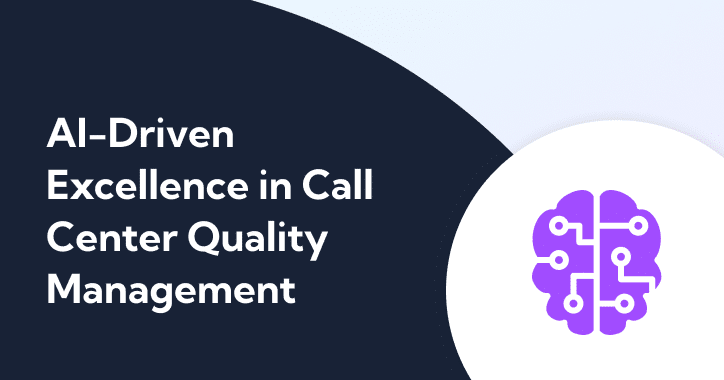Regardless of your industry, one factor ranks as the most important in achieving your goals. It’s not how many calls your agents can make. It’s not your ramp time, your CSAT scores, or any other crucial KPI metric, for that matter. While all of these are important, none of them amount to anything if your agents aren’t able to do one fundamental thing: communicate effectively.
Luckily, there is an answer for optimizing communication: Artificial Intelligence (AI). While some view AI as a futuristic replacement for human agents, the reality is that contact centers will always need people. AI simply works alongside agents as a tool, not a substitute. We’ll explore how modern contact centers can improve communication standards by partnering well-trained agents with AI solutions.
Communication Barriers Impacting Contact Centers
While there are many physical, emotional, and psychological barriers to effective communication, these four are particularly troublesome for contact centers.
- Overuse of Jargon – When you’re working in any industry, it’s easy to pick up phrases specific to that field. Although these phrases are commonplace to you, many of your clients may not be familiar with them. Your agents must meet people where they are with language they can understand.
- Lack of Knowledge – Another barrier to communication is lack of knowledge. This can come in many forms, from insufficient training to plain old lack of preparation. Before engaging in any call, your agents must understand all material and be equipped to answer all potential client questions.
- Prejudices – It’s such an ugly word… Here’s what we mean. In many instances, your agents will have some preconceived notions about the people on the other side of the phone. For example, an agent in the collections industry may assume (consciously or not) that debtors don’t want to pay what they owe. This assumption could lead to hostility.
- Not Listening – A big part of selling is listening. Ultimately, calls aren’t about the agents and what they have to say, they’re about the client. While it’s true that major points have to be made, slowing down to listen for customer interest has been shown to increase conversion rates by approximately 30%.
Ways That AI Helps Overcome Those Barriers
We know the problems, but where do we go from here? After all, knowing is only half of the battle. Here are three ways contact centers can overcome the communication barriers listed above (and more) by partnering with AI.
- Dynamic prompts – Scripts are designed to help agents have the best conversations possible. This prevents distractions and the overuse of jargon. But what happens when agents start to wander off script? Dynamic prompts powered by AI keep the conversation on track by listening to both sides of the call and automatically guiding agents with the right phrases. This real-time support can increase compliance rates exponentially.
- Live coaching – Sometimes even if agents adhere to scripts perfectly, communication barriers arise. Unexpected questions, hostility from clients, perhaps even their own prejudices. There is an AI solution to help with this as well. Managers can set alerts that indicate an agent may need assistance on a call, or agents can request help; managers can then listen to the call and provide live tips for the agent via chat.
- Speech Monitoring – How do you know if you’re talking too much on a call? How can you tell if you’re actively listening for customer interest? A call quality monitoring solution takes into account two critical speech metrics, ratio and pace. AI can help to prevent your agents from talking too fast or not enough. By giving agents subtle on-screen prompts, AI can resolve these issues instantly without the need for any human coaching.
Aiming for Optimized Communication
Every contact center has a goal. Whether that goal is to close sales, provide customer support, set appointments, collect debts, or any number of other objectives, optimizing communication with modern AI solutions creates a more efficient path to success.
As the leading Real-Time solution for contact centers, Balto has impacted key outcomes for customers, like:
- Increased Conversion Rates
- Lower Average Handle Times (AHT)
- Improved Customer Satisfaction Scores (CSAT)
- Creating Urgency in Sales
- Faster Agent Ramp Times
- Fewer Manager Requests
- Increased Manager Productivity
For more insight on these benefits and examples of companies who have seen meaningful results from implementing Balto, review the case studies in our resource hub.
The Right Support for The Right People
Every baseball player needs a bat to hit a home run. Every chef needs quality ingredients to create a 5-star meal. For agents, it’s no different — they need the right tools to achieve excellence.
AI will not replace humans in contact centers. Instead, it can help guide human communication to a more efficient and more productive place that benefits customers, agents, and organizations alike.
Thanks to AI, agents never have to fumble for the right response again. Managers don’t have to spend hours sifting through call recordings for QA, or re-coaching a skill that could have been implemented live on a call. See how Balto can change your organization — book a demo today.






